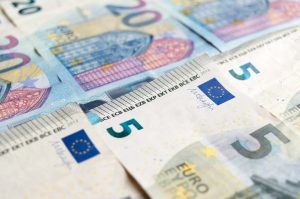Slippage in forex trading is a term used to describe the difference between the expected price of a trade and the actual price at which the trade is executed. This difference can occur due to various reasons such as market volatility, liquidity, and execution speed. Slippage is a common phenomenon in forex trading and can have a significant impact on a trader’s profitability.
Slippage can occur in both directions, i.e., positive and negative. Positive slippage occurs when a trader gets a better price than expected, while negative slippage occurs when the trader gets a worse price than expected. Both types of slippage can have a significant impact on a trader’s profits.
One of the main reasons for slippage in forex trading is market volatility. When there is high volatility in the market, the price of a currency pair can change rapidly. This can make it difficult for traders to execute trades at the expected price. For example, if a trader wants to buy a currency pair at a certain price, but due to sudden market volatility, the price of the currency pair jumps up, the trader may end up buying the currency pair at a higher price than expected, leading to negative slippage.
Another reason for slippage in forex trading is liquidity. Liquidity refers to the ease with which a trader can buy or sell a currency pair without affecting its price. When there is low liquidity in the market, it can be challenging for traders to execute trades at the expected price. This is because there may not be enough buyers or sellers in the market to match the trader’s order. As a result, the trader may experience slippage.
Execution speed is also a critical factor that can affect slippage in forex trading. When a trader places an order, the order is first sent to the broker’s trading platform, which then sends it to the liquidity provider. The time taken for this process can vary depending on the broker’s infrastructure, the speed of the internet connection, and the location of the server. If there is a delay in the order execution process, it can lead to slippage.
Slippage can have a significant impact on a trader’s profitability. If a trader experiences negative slippage frequently, it can lead to significant losses. For example, if a trader places a stop-loss order at a certain price but experiences negative slippage, the stop-loss order may be executed at a worse price, leading to more significant losses.
To minimize the impact of slippage, traders can use certain strategies. One of the most common strategies is to use limit orders instead of market orders. A limit order is an order to buy or sell a currency pair at a specific price or better. By using limit orders, traders can control the price at which they enter or exit a trade, reducing the risk of slippage.
Traders can also use stop-loss orders to limit their losses in case of slippage. A stop-loss order is an order to sell a currency pair at a specific price to limit losses. By using stop-loss orders, traders can protect their trades from sudden market movements that can lead to slippage.
In conclusion, slippage is a common phenomenon in forex trading that can have a significant impact on a trader’s profitability. Slippage can occur due to various reasons such as market volatility, liquidity, and execution speed. To minimize the impact of slippage, traders can use certain strategies such as using limit orders and stop-loss orders. By understanding the causes of slippage and using appropriate strategies, traders can reduce their exposure to slippage and improve their overall trading performance.


